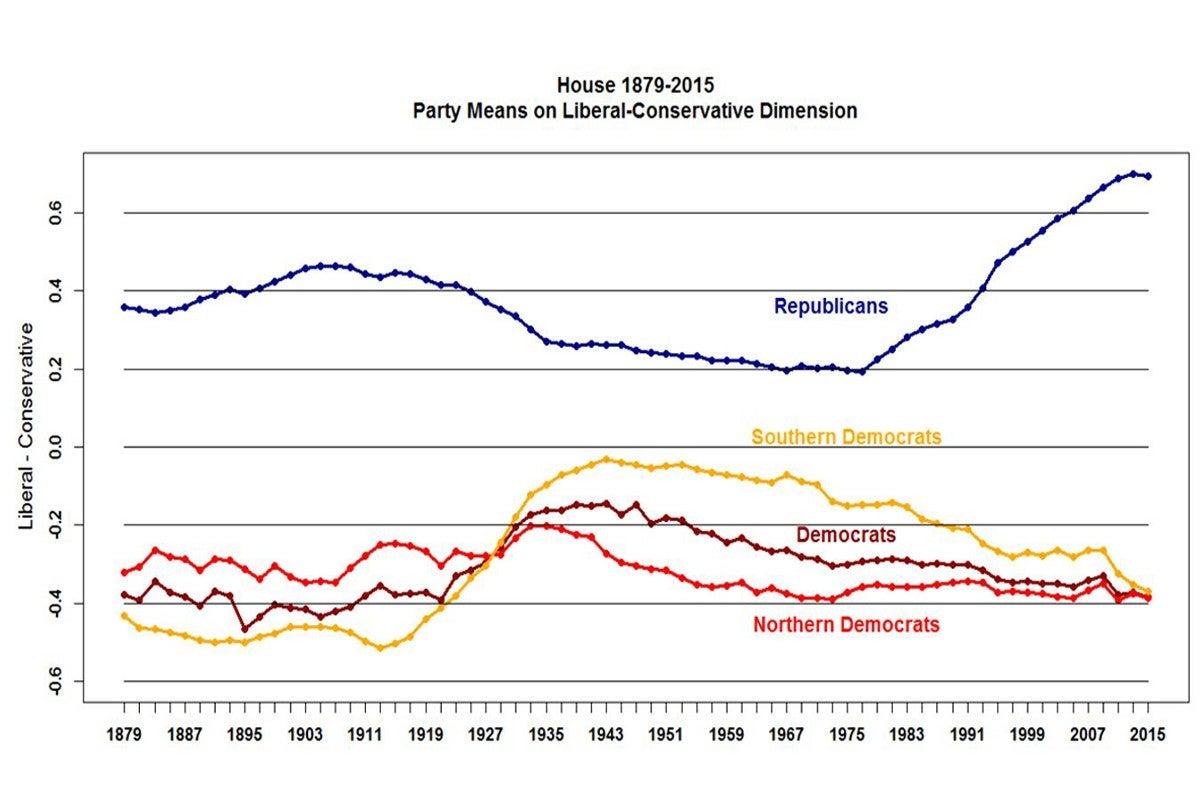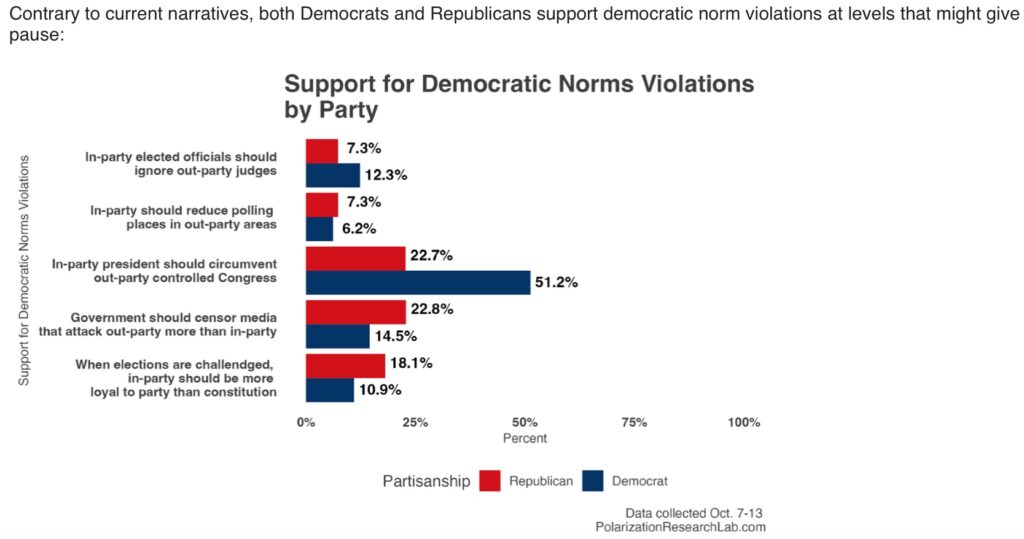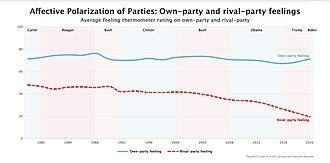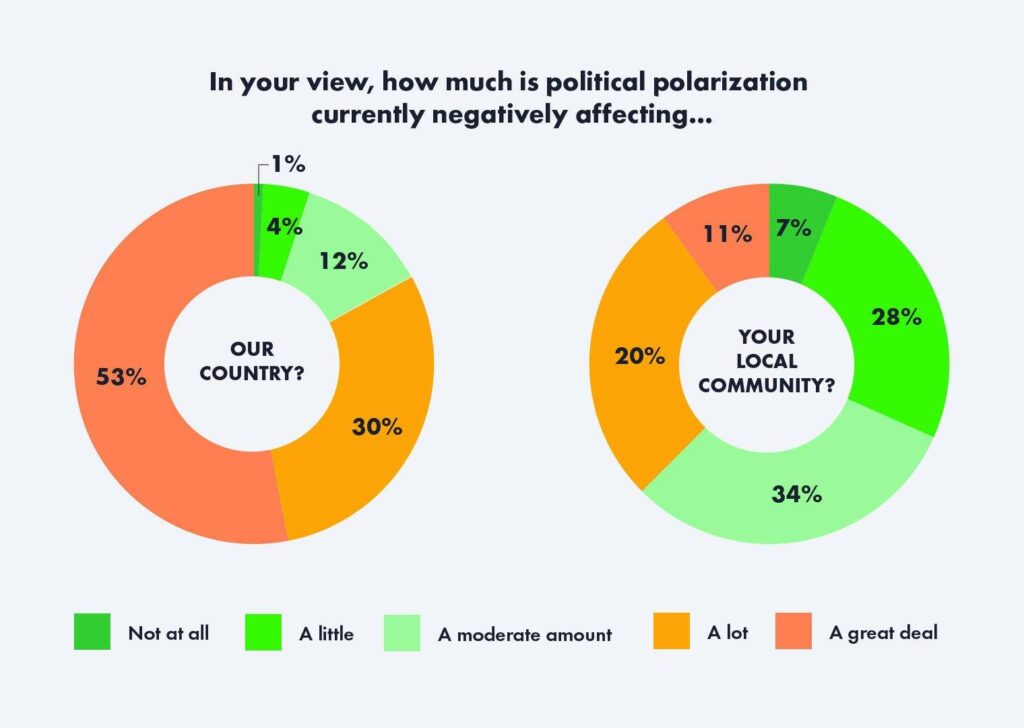In an era defined by rapid information flow and digital connectivity, the contours of political belief are shifting in ways both subtle and striking. Recent data paints a compelling picture: political polarization is no longer confined to isolated pockets but is spreading broadly across diverse demographics. From urban centers to rural communities, across age groups and socioeconomic statuses, divisions in political outlook are becoming more pronounced. This article delves into the emerging patterns revealed by the data, exploring how polarization is reshaping the social and political landscape for individuals and societies alike.
Rising Political Divides Across Age Groups and Regions
Recent studies highlight a growing chasm in political attitudes that is increasingly defined by both generational and geographic lines. Younger voters, particularly those under 30, tend to lean towards progressive ideologies, while older demographics show a stronger inclination for conservative values. This divergence is not just a matter of opinion but reflects deeper cultural and economic shifts influencing each group’s worldview.
Regionally, the divide is equally stark. Urban centers continue to trend towards liberal policies, driven by diverse populations and unique economic challenges, whereas rural areas often display staunchly traditional perspectives, emphasizing local values and community-oriented governance. These contrasts underscore how environment and lifestyle play significant roles in shaping political identity.
Key factors contributing to these divides include:
- Access to education and information sources
- Economic opportunities and disparities
- Cultural values and social norms
- Media consumption patterns
To visualize this polarization, the table below summarizes the percentage of political alignment by age group and region based on the latest data:
| Demographic | Urban (%) | Suburban (%) | Rural (%) |
|---|---|---|---|
| 18-29 (Progressive) | 68 | 52 | 34 |
| 30-49 (Moderate) | 45 | 48 | 41 |
| 50+ (Conservative) | 30 | 42 | 60 |
This data not only reveals the intensity of polarization but also suggests potential flashpoints for future political discourse, emphasizing the need for nuanced dialogue and inclusive policy-making that bridges these divides.
The Role of Social Media in Amplifying Polarization

Economic Factors Driving Partisan Loyalties and Shifts
Economic realities have long been a bedrock for shaping political identities, but recent data reveals a sharper divide rooted in financial experiences and expectations. As income inequality widens, voter alignment increasingly mirrors economic stratification. Those in lower income brackets tend to gravitate toward parties promising social safety nets and wealth redistribution, while wealthier demographics often support platforms emphasizing tax cuts and deregulation. This economic divergence fuels not only partisan loyalty but also intensifies the emotional stakes attached to political affiliation.
Moreover, the instability of job markets-marked by automation, outsourcing, and gig economy growth-has disrupted traditional political coalitions. Individuals in sectors facing decline or uncertainty are more susceptible to shifting allegiances, often driven by immediate economic anxieties rather than long-standing ideological commitments. This dynamic is particularly evident among middle-class voters, who are caught between aspirations for economic security and the realities of wage stagnation.
Key economic factors influencing partisan shifts include:
- Rising cost of living and housing affordability crises
- Access to quality healthcare and social services
- Perceptions of economic opportunity and mobility
- Impact of trade policies on local industries
| Economic Factor | Demographic Most Affected | Typical Partisan Response |
|---|---|---|
| Job Market Instability | Middle-aged Workers | Shift towards protectionist policies |
| Housing Costs | Young Urban Professionals | Support for affordable housing initiatives |
| Healthcare Access | Low-income Families | Favor expanded public healthcare |
In essence, economic factors are not just background conditions but active drivers of political identity formation and transformation. As economic disparities deepen, they exacerbate partisan divides, making consensus more elusive and polarization more entrenched. Understanding these economic undercurrents is essential to addressing the root causes behind shifting political landscapes across diverse demographic groups.

Bridging the Gap Through Inclusive Dialogue and Education
To counteract the divisive trends revealed by recent data, fostering inclusive dialogue becomes paramount. This means creating spaces where diverse voices are not only heard but valued. When individuals from different backgrounds engage in open, respectful conversations, misconceptions dissolve and empathy flourishes. Encouraging community forums, moderated discussions, and cross-demographic workshops can break down the walls of misunderstanding that fuel polarization.
Education plays a pivotal role in this endeavor. Integrating curricula that emphasize critical thinking, media literacy, and civic engagement helps equip individuals with the tools to navigate complex political landscapes thoughtfully. Schools and community organizations must prioritize programs that teach not just facts, but the importance of listening and considering multiple perspectives.
Practical steps to promote inclusivity might include:
- Intergenerational dialogues that bridge age gaps and share experiences
- Workshops on bias awareness to uncover and address unconscious prejudices
- Collaborative projects that unite people around common goals, transcending political labels
| Strategy | Benefit |
|---|---|
| Community Forums | Build trust and shared understanding |
| Media Literacy Education | Combat misinformation and encourage informed choices |
| Intercultural Activities | Celebrate diversity and reduce stereotypes |

Policy Approaches to Mitigate Increasing Polarization
Addressing the rising tide of political polarization requires a multifaceted strategy that balances dialogue, education, and transparency. Policymakers must prioritize initiatives that foster cross-partisan understanding, encouraging citizens to engage with diverse perspectives without fear of social alienation. This can be achieved through community programs that promote shared goals and collective problem-solving, thereby reducing the “us vs. them” mentality.
Educational reforms play a pivotal role in shaping future generations who are equipped to navigate complex political landscapes. Introducing curricula that emphasize critical thinking, media literacy, and civic education can empower individuals to discern misinformation and appreciate nuanced viewpoints. Schools and universities become arenas not just for knowledge transfer but for cultivating empathy and respect for democratic debate.
Transparency in governance also acts as a powerful antidote to polarization. When institutions operate with clear communication and accountability, public trust tends to increase, which diminishes the appeal of extreme partisan rhetoric. Policies encouraging open data, accessible government proceedings, and community involvement help create a political environment where cooperation is valued over confrontation.
- Facilitate bipartisan town halls and forums to create safe spaces for dialogue.
- Support nonprofit organizations dedicated to bridging ideological divides.
- Implement fact-checking and media literacy programs at all educational levels.
- Enhance transparency laws to promote government accountability.
| Policy Area | Key Approach | Expected Impact |
|---|---|---|
| Community Engagement | Cross-partisan dialogue initiatives | Reduced social division |
| Education | Critical thinking & media literacy | Informed electorate |
| Governance | Transparency and accountability | Increased public trust |
Wrapping Up
As the data unfolds, the widening chasms in political beliefs reveal more than just numbers-they sketch the contours of a society increasingly divided along lines once thought permeable. From age to geography, income to education, polarization threads through the fabric of our communities, challenging us to look beyond our echo chambers. While the trends may seem daunting, understanding the nuances behind the statistics offers a crucial first step toward bridging divides. In a landscape marked by contrast, perhaps the greatest hope lies in the shared quest for dialogue, empathy, and a collective future that transcends partisan boundaries.


Social media platforms have transformed how individuals consume and share political information, often serving as echo chambers that reinforce existing beliefs rather than challenge them. Algorithms designed to maximize engagement inadvertently prioritize content that evokes strong emotional reactions, such as outrage or fear. This dynamic fosters an environment where extreme viewpoints thrive, deepening divisions among users across various demographics.
Moreover, the speed and reach of social media allow misinformation and partisan narratives to spread rapidly, often outpacing fact-checking efforts. Users are more likely to encounter and engage with content that aligns with their ideological preferences, creating filter bubbles that obscure opposing perspectives. This segmentation contributes to a fragmented public discourse where consensus becomes increasingly elusive.
Ultimately, the role of social media in amplifying political polarization is complex and multifaceted. While these platforms can facilitate civic engagement and awareness, their structural incentives often exacerbate division rather than promote understanding. Addressing polarization will require deliberate design changes, improved media literacy, and fostering spaces where diverse viewpoints can coexist respectfully.